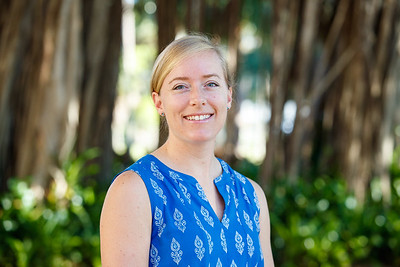In fall 2019, a joint-disciplinary Area of Concentration (AOC) in neuroscience will be offered to pair with any primary AOC. Pursuing this program will equip students with a diverse understanding of the mind’s sensory, motor and cognitive phenomena at the cellular level and the systemic level. The interdisciplinary area will approach the study of the brain from the student’s perspective of choice, including psychology, biology and medical humanities.
Professor of Biology Elizabeth Leininger, Professor of Psychology Peter Cook and Professor of Psychology Kathleen Casto are the three professors spearheading the program.

“Professors Cook, Casto and I were all hired here at New College within the past four years,” Leininger said. “As new faculty whose research and teaching focuses on the brain and behavior, we decided to examine the neuro-focused academic programs here and think about how they overlapped and how we could strengthen them going forward. We realized that we wanted to be more collaborative in helping New College students study the brain and to highlight the interdisciplinary strengths of our research and teaching. We decided to propose a program in neuroscience, which is the interdisciplinary study of the brain and mind.”
The development process for the program started last summer, defining the learning objectives and necessary courses for the drafted objectives.

“We concluded that a joint-disciplinary program in neuroscience was the best fit for our current infrastructure,” Leininger said. “The Divisions gave feedback on the plan, and then the Educational Policy Committee (EPC) and the Provost approved it. Going forward, we will collect data on the use of this program to inform any future decisions.”
According to the Neuroscience catalog description and academic learning compact, the learning objectives should provide the students who complete the joint-disciplinary AOC with a base understanding of neuroscience to comprehend, analyze and critique contemporary works in the field. Additionally, the program will teach students to navigate the basic scientific processes in neuroscience, clearly communicating the scientific information in both written and oral forms. Lastly, the program strives to empower students to apply ethical reasoning to contemporary problems and debates in the neuroscience field.
The “Introduction to Neuroscience” course was introduced in spring 2019 and does not have any prerequisites.
“At my prior college, the “Introduction to Neuroscience” course I taught required psychology and chemistry prerequisites,” Leininger said. “I think this limited the group of students who took the course and ultimately pursued a minor in Neuroscience. I wanted to remove these barriers when I came to teach at New College.”
The lack of barriers was appealing to some students and encouraged them to pursue the program.

“As a second-year, I was worried that I wouldn’t be able to complete the joint-discipline [in neuroscience] but then I saw that the classes included did not have requirements other than the classes that were already in the program,” second-year Daniel Duprez said. “This allows me to be confident in my ability to complete the program.”
Although the information of the program was only introduced on Apr. 25, the demand from students for the neuroscience program is striking.
“It’s a popular and burgeoning area of research that combines lots of interesting topics across biology, psychology, physiology and technology,” Casto said in an email interview. “It is becoming increasingly clear that understanding the way organisms behave and how to treat mental and physical illness requires a more complete and complex understanding of how the brain, mind and body interact. Neuroscience is a holistic approach to today’s biggest basic research questions and the greatest medical and interpersonal challenges. New College students are keen on this and seem to be quite excited.”
When asking students who were thinking about pursuing the program, there were concerns with incorporating components of neuroscience as a joint AOC in their baccalaureate examination.
“My biggest concern is how exactly the requirements for the new neuroscience program impact the baccalaureate exam,” Duprez said, “especially for people with their AOC having little to do with neuroscience.”
Professors spearheading the program shared insights about how to navigate the baccalaureate process with the joint-disciplinary neuroscience AOC.
“Students must have a neuroscience faculty on their baccalaureate committee in order to certify their joint-disciplinary AOC, as is true for any joint-disciplinary AOCs here at New College,” Leininger said. “It’s important to note that the student’s thesis project itself does not need to be focused on neuroscience. Rather, a neuroscience professor sits on the committee to evaluate whether the student has demonstrated breadth and depth of study in neuroscience in their academic record and whether the student can converse about neuroscience.”
The professors involved in the creation of the program emphasized how the addition of the neuroscience program differs from the present available academic pathways and provides a interdisciplinary element to the neuroscience field.
“Currently, students interested in the brain could pursue Biopsychology or Neurobiology AOCs, which focus on the psychology or biology of the nervous system,” Leininger said. “Neuroscience is an interdisciplinary field, and understanding the brain requires increasingly interdisciplinary thinking. We hope that students who pursue the joint-disciplinary concentration will have a more holistic view of the brain than if they studied it from only one perspective.”
